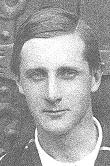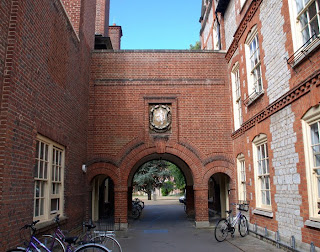
When I was a teenager I loved Dorothy Sayers detective, Lord Peter Wimsey. I derived a vicarious pleasure from his fictional lifestyle. At that age it was the bridge between the wholly imaginary fairytales of childhood and the delicious real and imagined pleasures of adulthood. Even the author basked in the glow of her character. Sayers’ biographer, Barbara Reynolds, quotes Sayers in How I Came to Invent the Character of Lord Peter Wimsey:
“Lord Peter's large income... I deliberately gave him... After all it cost me nothing and at the time I was particularly hard up and it gave me pleasure to spend his fortune for him. When I was dissatisfied with my single unfurnished room I took a luxurious flat for him in Piccadilly. When my cheap rug got a hole in it, I ordered him an Aubuson carpet. When I had no money to pay my bus fare I presented him with a Daimler double-six, upholstered in a style of sober magnificence, and when I felt dull I let him drive it. I can heartily recommend this inexpensive way of furnishing to all who are discontented with their incomes. It relieves the mind and does no harm to anybody.”
One would imagine the Wimsey family at a house like Longleat
Lord Peter was a man possessed of a spectacular level of refinement that reached its highest pitch in the 1928 short story The Bibulous Business of a Matter of Taste (Lord Peter : The Complete Lord Peter Wimsey Stories ). This tale led me down the path to exploring wine and food more than any other I can think of. Although my mother and grandmother were good cooks that enjoyed entertaining well, I did not come from a background of rarified tastes and spectacular cellars. I had never cooked in my life. At 15 I was not allowed wine. This was my introduction. I aspired to this lifestyle.
). This tale led me down the path to exploring wine and food more than any other I can think of. Although my mother and grandmother were good cooks that enjoyed entertaining well, I did not come from a background of rarified tastes and spectacular cellars. I had never cooked in my life. At 15 I was not allowed wine. This was my introduction. I aspired to this lifestyle.
The point of the story is that 2 men, claiming to be Wimsey, show up at an appointment to obtain a poison gas formula. There is a duel of the palate that ensues to discover who is the real Wimsey. “It is not a matter of common notoriety that Lord Peter has a palate for wine almost unequalled in Europe?”, says the Comte de Rueil who devises the contest, “The bet which you won from Mr Frederick Arbuthnot at the Egoists’Club when he challenged you to name the vintage years of seventeen wines blindfold, received its due prominence in the Evening Wire”.
The two men are given wines and asked to determine their appellation, name of the producer and vintage year whilst dining on oysters, consommé marmite, poulet and confitures
After reading the story (which I know now is silly fun and rather a send-up of the Wimsey character) I felt compelled to read up on the wines that were discussed (no easy feat then, I had to go to the library!!). I read about the Chablis Moutonne (1916), Chateau Yquem (1911), Chevalier-Montrachet (1911) and Napoleon brandy and then took to trying as many as I could when I was able. I must say I have had all of them now… not of the same extraordinary age, of course, but certainly I’ve tried some at 15-20 years old which is what these would have been in 1928—even sampled brandy which was over a 100 (and held a bottle of 1811 from Josephine’s cellar but sadly was not allowed to taste it -- drat).
Dorothy L. Sayers
Why all this about Sayers??? The author of this story, Dorothy Sayers (1893-1957) is connected to Oxford, you see. She was born in Oxford and her father was the Chaplin of Christ Church and she went to Somerville College in 1912.
Lord Peter Wimsey (his appearance was based on Balliol’s Roy Ridley and Sayers felt he was a combination of Fred Astaire and Bertie Wooster) and his lady friend Harriet Vane were both at Oxford (Lord Peter at Balliol and Harriet at the fictional Shrewbury—based surely on Sayer’s Somerville which was the first college for women at Oxford).
Balliol College (building 1868)
Balliol detail
Lord Peter first appeared in Whose Body (1923) and Vane showed up in Strong Poison on trial for murder (1930). Gaudy Night (1935), set in Oxford, has Harriet solving a mystery there with Lord Peter helping on the sidelines (and at last having his proposal of marriage accepted by Vane!).
Balliol Dining Hall exterior
Balliol Dining Hall 1877
Balliol Dining Hall today
Since I was attending the Oxford Food Symposium, I thought I’d share one of the dishes with you. It was an Eton Mess (Wimsey did attend Eton before Balliol~!). It is a splendid and simple dessert that was traditionally served at the cricket game between Eton and Winchester, Wikipedia tells me. It has had the name since the 19th century and was originally made only with strawberries or bananas with ice cream or cream. The meringue was a later addition. The version we had was with mixed berries and an almond meringue. It was decadent in the extreme. Antony Worral Thompson’s recipe is simple and perfect
Eton Mess
• 1 box strawberries(or mixed berries)
Mash some of the strawberries with a little sugar and port, toss in the rest of the berries and fold in broken meringues and softly whipped cream.
**Meringues from Kala Englnd, BBC Food
.
. Preheat the oven to 130C/250F/Gas½.
. Butter a baking sheet and dust with flour. In a large bowl, beat the egg whites with the salt until foamy. Add the cream of tartar and beat until soft peaks form.
. Beat in 1 tbsp sugar until the mixture holds long stiff peaks when the beater is lifted. Fold in the remaining sugar, hazelnuts and vanilla. Pipe or spread the meringue into 6 forms (circles, squares-whatever you prefer) onto a baking sheet and bake for approximately 1 hour, or until the meringues are firm to the touch.
Transfer the meringues to a rack and allow to cool















0 comments:
Post a Comment